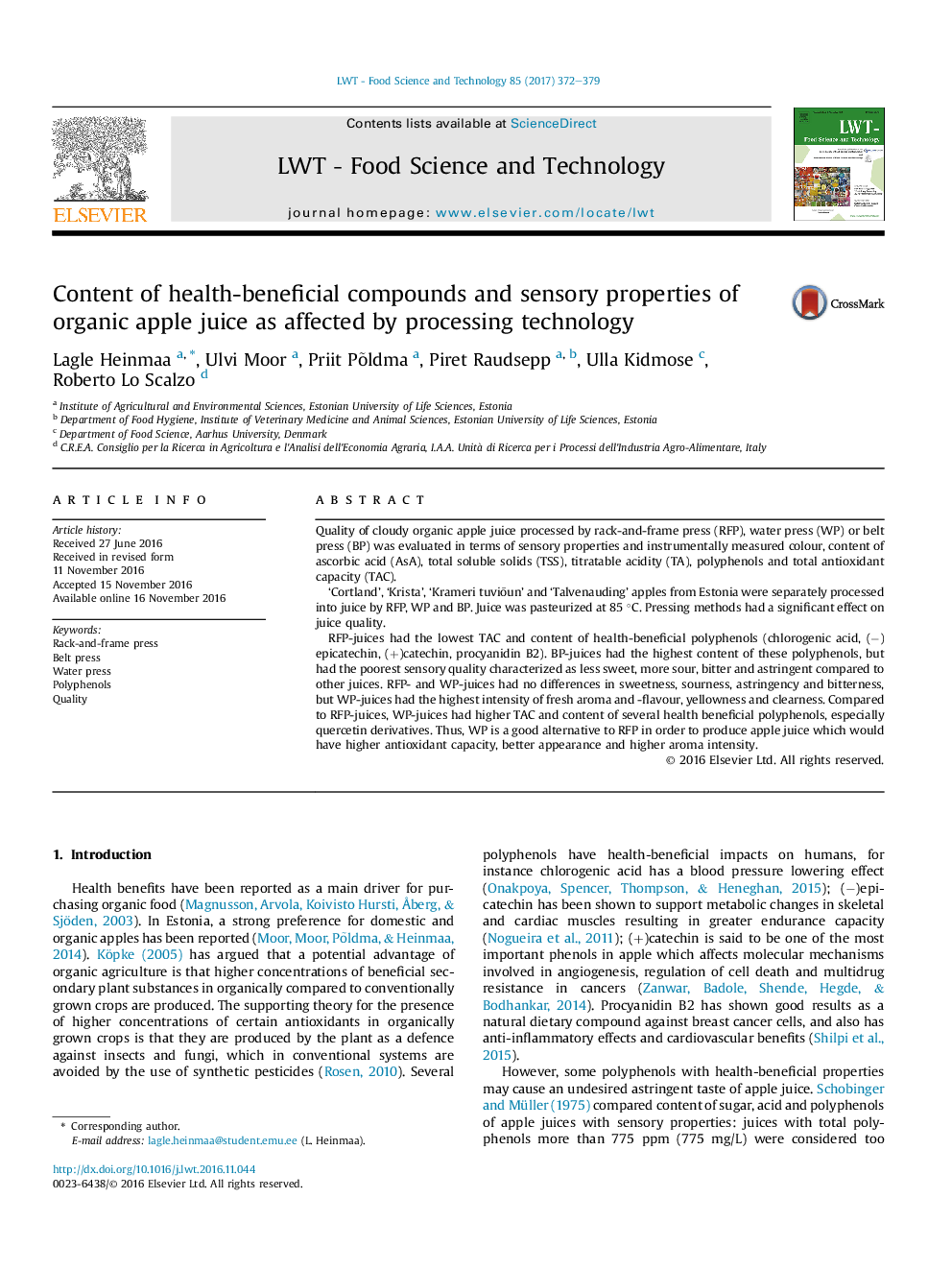| Article ID | Journal | Published Year | Pages | File Type |
|---|---|---|---|---|
| 5768391 | LWT - Food Science and Technology | 2017 | 8 Pages |
â¢Cloudy organic apple juice was pressed by three different pressing methods.â¢Rack-and-frame press juice had the lowest content of most polyphenols determined.â¢Belt press juice had high polyphenol content, but poor sensory properties.â¢Water press juice had the freshest aroma and flavour and high antioxidant capacity.â¢Water press can be recommended for small-scale juice producers.
Quality of cloudy organic apple juice processed by rack-and-frame press (RFP), water press (WP) or belt press (BP) was evaluated in terms of sensory properties and instrumentally measured colour, content of ascorbic acid (AsA), total soluble solids (TSS), titratable acidity (TA), polyphenols and total antioxidant capacity (TAC).'Cortland', 'Krista', 'Krameri tuviõun' and 'Talvenauding' apples from Estonia were separately processed into juice by RFP, WP and BP. Juice was pasteurized at 85 °C. Pressing methods had a significant effect on juice quality.RFP-juices had the lowest TAC and content of health-beneficial polyphenols (chlorogenic acid, (â)epicatechin, (+)catechin, procyanidin B2). BP-juices had the highest content of these polyphenols, but had the poorest sensory quality characterized as less sweet, more sour, bitter and astringent compared to other juices. RFP- and WP-juices had no differences in sweetness, sourness, astringency and bitterness, but WP-juices had the highest intensity of fresh aroma and -flavour, yellowness and clearness. Compared to RFP-juices, WP-juices had higher TAC and content of several health beneficial polyphenols, especially quercetin derivatives. Thus, WP is a good alternative to RFP in order to produce apple juice which would have higher antioxidant capacity, better appearance and higher aroma intensity.
